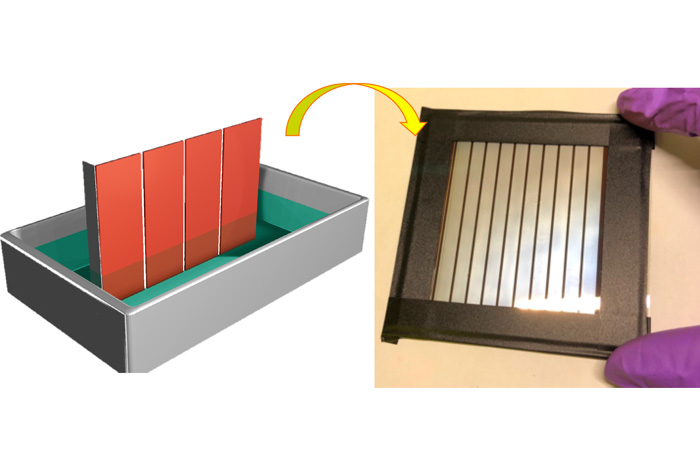United States – A new solution for fabricating stable perovskite solar cells has overcome the key bottleneck to large-scale production and commercialization of this promising renewable-energy technology.
Commercialization of perovskite photovoltaics has been stymied by the lack of a solution to the field’s grand challenge: scaling up production of high-efficiency perovskite solar cell modules from the bench-top to the factory floor.
The Los Alamos National Laboratory’s Center of Integrated Nanotechnologies team, in collaboration with researchers from National Taiwan University (NTU), invented a one-step spin coating method by introducing sulfolane as an additive in the perovskite precursor, or the liquid material that creates the perovskite crystal through a chemical reaction. As in other fabrication methods, that crystal is then deposited on a substrate.
The new process allowed the team to produce high-yield, large-area photovoltaic devices that are highly efficient in creating power from sunlight. These perovskite solar cells also have a long operational lifetime.
Through a simple dipping method, the team was able to deposit a uniform, high-quality perovskite crystalline thin film covering a large active area in two mini-modules, one of about 16 square centimetres and the other nearly 37 square centimetres. Fabricating uniform thin film across the entire photovoltaic module’s area is essential to device performance.
Sulfolane method paves the way for commercialization
The mini modules achieved a power conversion efficiency of 17.58% and 16.06%, respectively—among the top reported to date. The power conversion efficiency is a measure of how effectively sunlight is converted into electricity.
For other perovskite fabrication methods, one of the major roadblocks to industrial-scale fabrication is their narrow processing window, the time during which the film can be laid down on the substrate. To get a uniform crystalline film that’s well bonded to the layer below it, the deposition process has to be strictly controlled within a matter of seconds.
Using sulfolane in the perovskite precursor extends the processing window from 9 seconds to 90 seconds, forming highly crystalline, compact layers over a large area while being less dependent on the processing conditions.
The sulfolane method can be easily adapted to existing industrial fabrication techniques, which helps to pave the path toward commercialization.
A perovskite is any material with a particular crystal structure similar to the mineral perovskite. Perovskites can be engineered and fabricated in extremely thin films, which makes them useful for solar photovoltaic cells.




